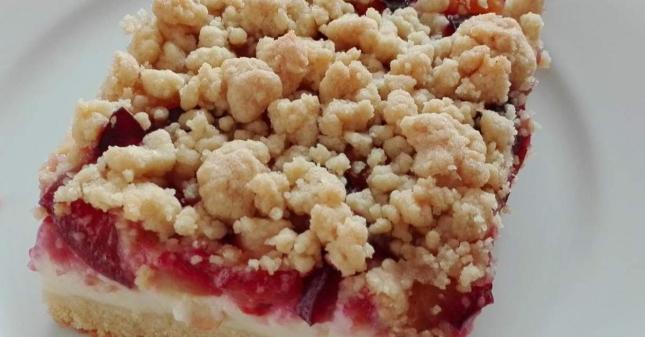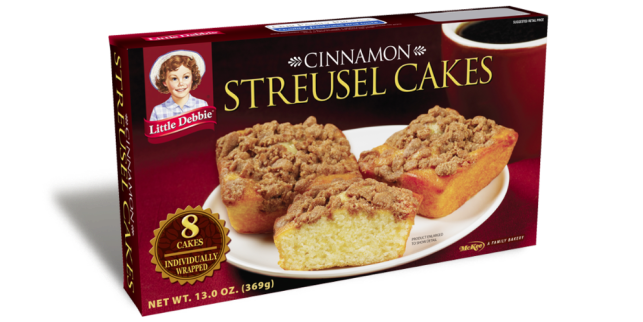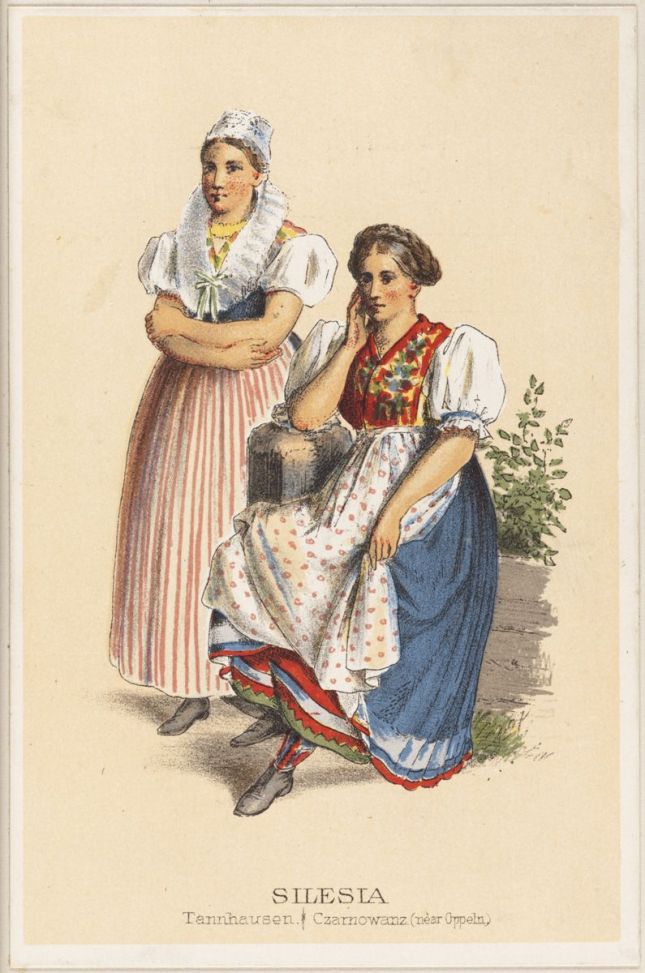
We all probably remember those individually wrapped Hostess Crumb Cakes, which many of us received in our lunch boxes as kids. Or maybe you preferred the Little Debbie Cinnamon Streusel Cake or their Cream Cheese Streusel Cake. Sarah Lee has a crumb cake, and other regional snack companies like Drakes, and Tasty Kake do too., although Tasty Cake’s Coffee Cake Juniors’ white streusel bits are machine made, perfectly extruded unnatural cylinders. They’re not the amorphous, random sized bits of hand made streusel. Unfortunately what started out as a lovely, moist, delicious cake, has been mass produced into a horrible version of itself, as with most commercially made bakery products. All these American snack cakes, commonly referred to in English as crumb cakes, descend from the Streuselkuchen, which originated in the former Prussian province of Silesia, a part of which became Germany in 1945, and the Eastern part became part of Poland.

The streuselkuchen, known in the Silesian German dialect as ‘Straeselkucha’, was originally a sweet yeast dough, made with quark, a kind of cream cheese, a sour fruit topping, and crumbled bits of streusel made of butter, sugar, cinnamon, and flour, and sometimes topped with slivered nuts, like almonds. It should be no surprise that this coffee cake is still very popular in Germany, and is still very popular at independent bakeries around town here in the U.S. Streuselkuchen is literally translated as “sprinkled cake.” Most American streusels don’t have the sour fruit filling underneath the streusel like the German versions, nor are made with quark cheese. Across Germany you’ll find fillings of apple, sour cherries, rhubarb, plums, apricots, and gooseberries. Closer to the east, you’ll find fruit fillings of sweet cheese and even poppyseeds.

Traditional costumes of the original Silesian streuselkuchen bakers.
My uncle and grandfather made streusel cakes from the 50s- through the 80s in their bakeries in Northern Kentucky, and we had them at our breakfast table many Sundays for the after church big breakfast. They had both vanilla streusel and cinnamon streusel toppings. And they made the German version with fruit below the streusel, which they layered with apple, blueberry, or cherry and then topped with chewy vanilla streusel. They made the plain, no fruit cinnamon streusel by partially baking yellow cake and finishing with cinnamon streusel topping and sometimes sprinkling lightly with powdered sugar. They also made what they called an ABC coffee cake, which had triangular sections of blueberry, cherry, and apple, covered in vanilla streusel. My all time favorite was their blueberry streusel cake. Give me a wedge of that and I was a happy camper.
My favorite dessert of my mother’s is her peach streusel cake. It has the delicious cinnamon streusel topping and a super-moist sweet cake below with chunks of tender peaches. It’s so simple – I’ve made it successfully – but so good with a piping hot cup of strong coffee on a lazy Sunday morning.
American bakers have taken the crumb cake to the next level, using fruits like pineapple or raspberry, or sprinkling chocolate chips in with the streusel. Although the original Silesians would probably cringe at these unholy variations, I am grateful to those early Silesian bakers who invented this wonderful coffee cake.
